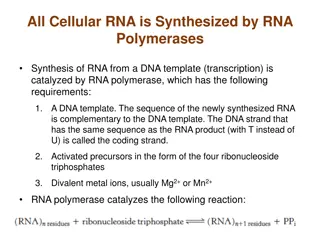Promoter of Egyptian Trade: Pharaoh Hatshepsut
Pharaoh Hatshepsut, the first female ruler of Egypt during the New Kingdom, reigned from about 1473 to 1458 B.C.E. She promoted Egyptian art, commissioned remarkable architecture, and encouraged trade with other countries, notably leading a significant expedition to the African kingdom of Punt. Despite facing challenges as a female pharaoh, she consolidated her power, appointed loyal advisers, and left behind a stunning temple at Dayr al-Bahri as a monument to her reign.
Download Presentation

Please find below an Image/Link to download the presentation.
The content on the website is provided AS IS for your information and personal use only. It may not be sold, licensed, or shared on other websites without obtaining consent from the author. Download presentation by click this link. If you encounter any issues during the download, it is possible that the publisher has removed the file from their server.
E N D
Presentation Transcript
ANCIENT EGYPT and Nonfiction Summary Organizer
Social Studies Chapter 8 section 8.5 Pharaoh Hatshepsut: Promoter of Egyptian Trade During the New Kingdom, the pharaoh Hatshepsut (haht-SHEP-soot) ruled Egypt from about 1473 to 1458 B.C.E. Hatshepsut was Egypt's first female pharaoh. Under her rule, Egyptian art and architecture flourished. Hatshepsut was also known for encouraging trade. MAIN IDEA: Hatshepsut was an important pharaoh who ruled Egypt Ruled from about 1473 to 1458 BC.E., during the New Kingdom. Egypt s first female ruler -demanded the same respect that a male ruler would be given. Stayed in power by appointing loyal advisers to government positions Known for promoting trade with other countries, including an expedition, undertaken by over 200 men, to the African kingdom of Punt. Constructed the stunning temple at Dayr al-Bahri, which was built directly into a cliff. Outside the temple were 200 sphinx statues Inside were carvings of scenes from Hatshepsut s reign, including the expedition to Punt. One of her greatest accomplishments was her rise to power. Never before had a woman pharaoh ruled Egypt. At first, she shared power with her male relatives. However, she soon took over as sole ruler. Hatshepsut strengthened her position in several ways. She filled her government with loyal advisers. She demanded the same respect shown to male rulers. Sometimes, she dressed in men's clothing. She even put on the fake beard worn by male pharaohs. Artists were often instructed to portray her as a man. She also spread stories that her father was a god. As pharaoh, Hatshepsut promoted trade with other countries. Her biggest trade expedition was to the African kingdom of Punt, at the southern end of the Red Sea. Over 200 men in five ships brought gifts and trade goods to Punt. Hatshepsut left behind a stunning monument to her reign a great temple at Dayr al-Bahri (deer ahl-BAH-ray). The main part of the temple was built into a cliff above the Nile River. At the entrance were two tall, thin monuments called obelisks. The entrance was also graced by 200 sphinx statues. The sphinx is a mythical creature with the body of a lion and the head of a man. Scenes from Hatshepsut's reign decorated the temple walls. Detailed carvings portrayed the great voyage to Punt. The carvings showed the valuable things that the pharaoh's traders had brought back to Egypt.
Social Studies Chapter 8 section 8.5 Pharaoh Hatshepsut: Promoter of Egyptian Trade
Directions for Independent Activity You will be completing an organizer in order to prepare to write a non-fiction summary for the Where did King Tut Get His Eyebrows? article Go to the Reading section of your class OneNote You will be using the Where did King Tut Get His Eyebrows? article that you read yesterday Review the main ideas and details that you wrote from this article Use the non-fiction summary organizer to organize your main idea and supporting details. Come up with a final thought/draw a conclusion as your last sentence This work is mandatory and must be submitted for a grade If you do this on OneNote that counts as submitting work because your teacher will be able to see it there. If not, you need to email your completed organizer to your teacher























